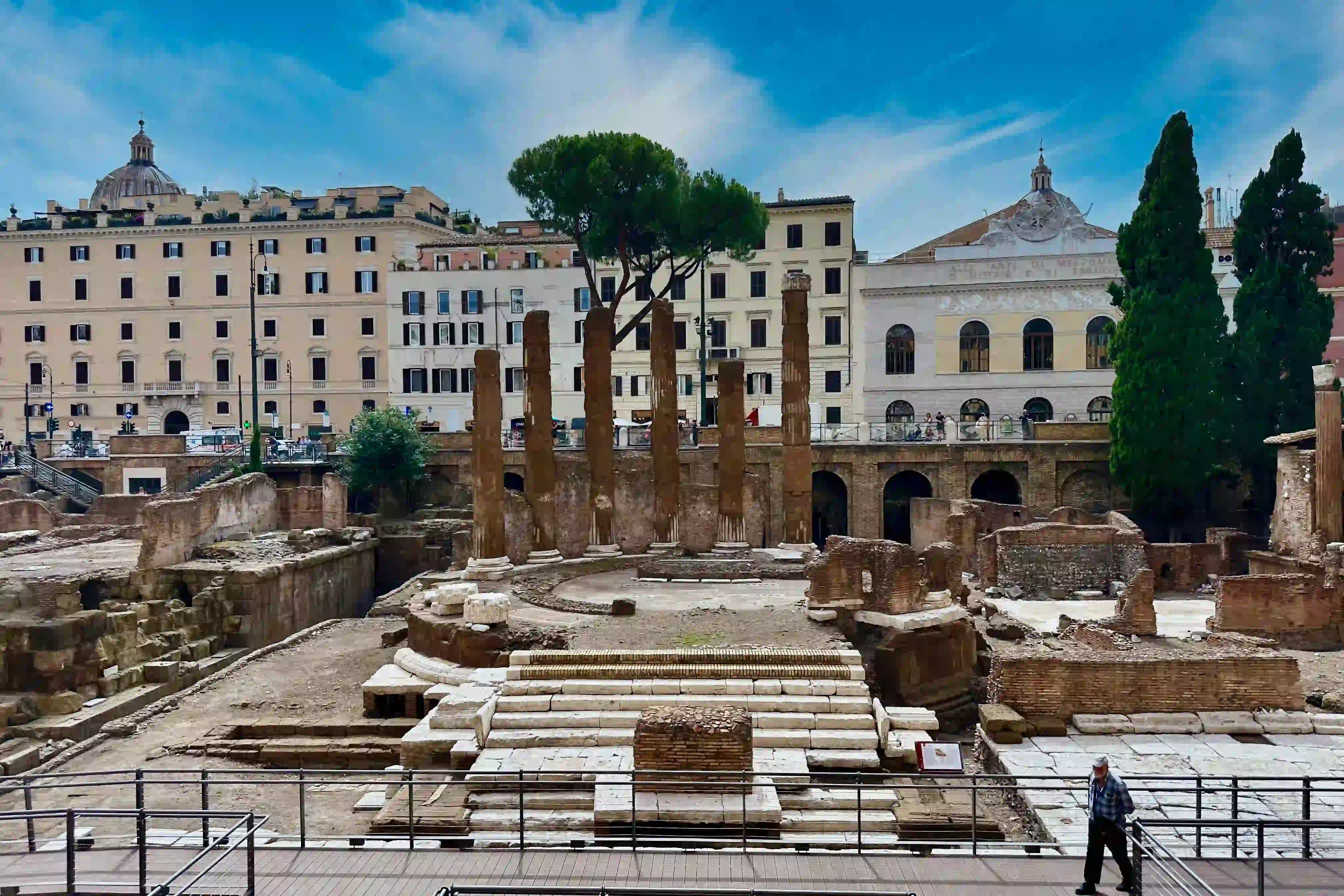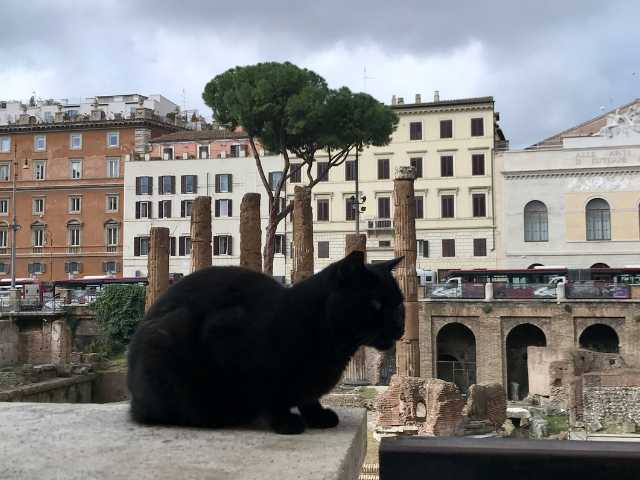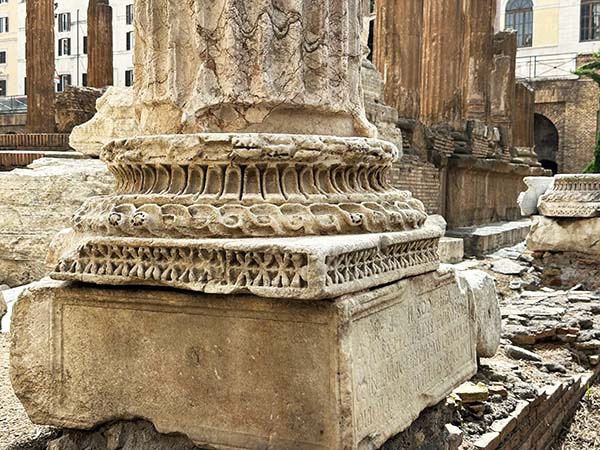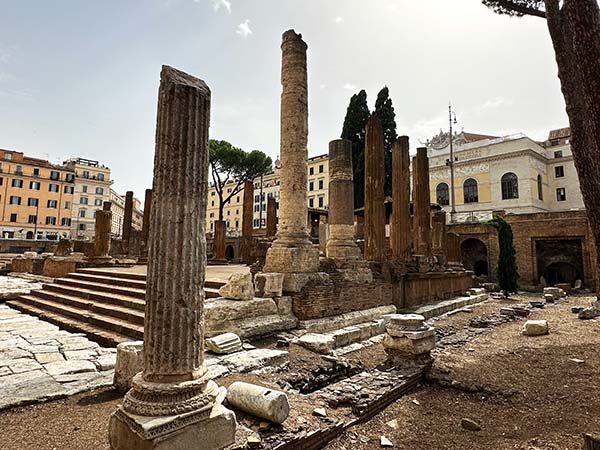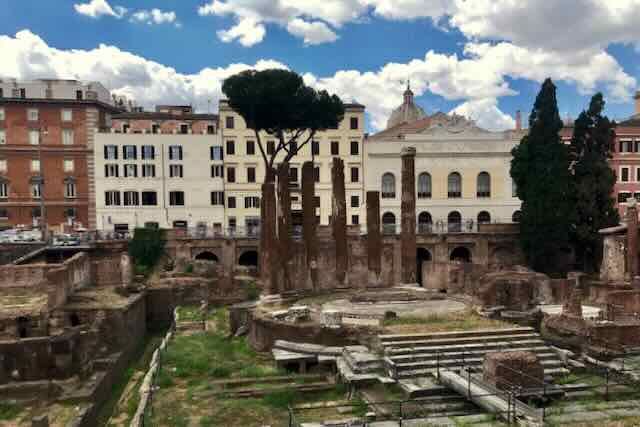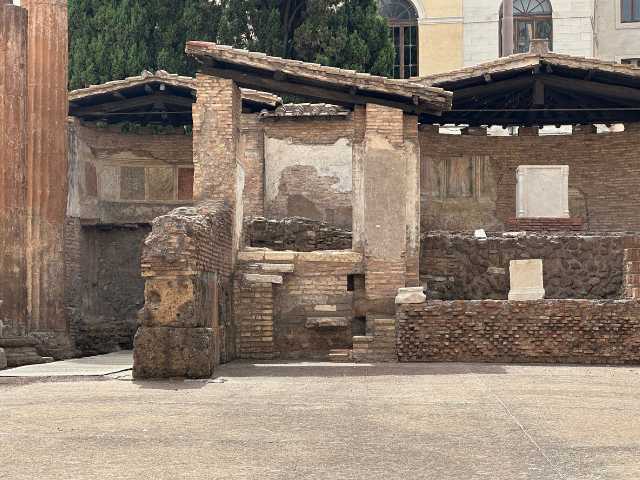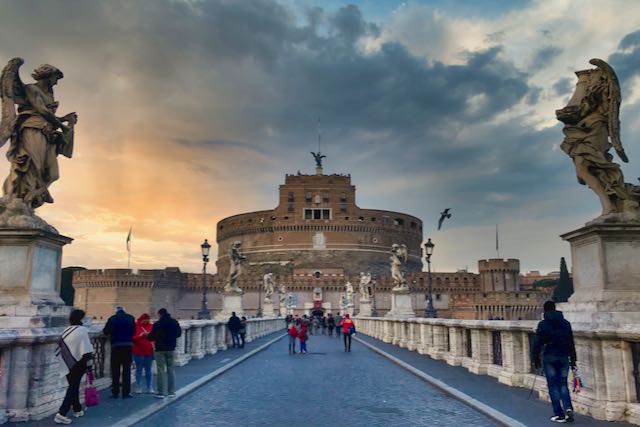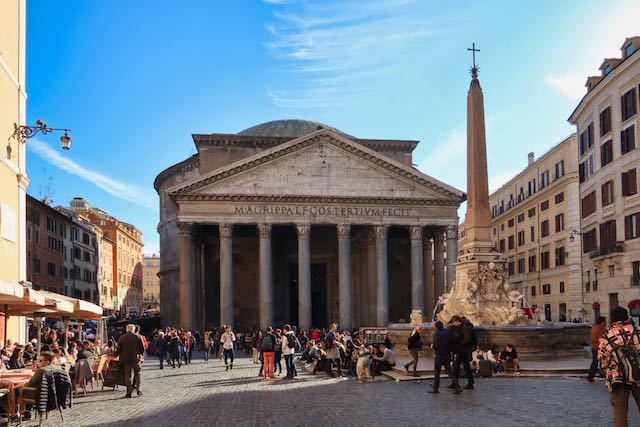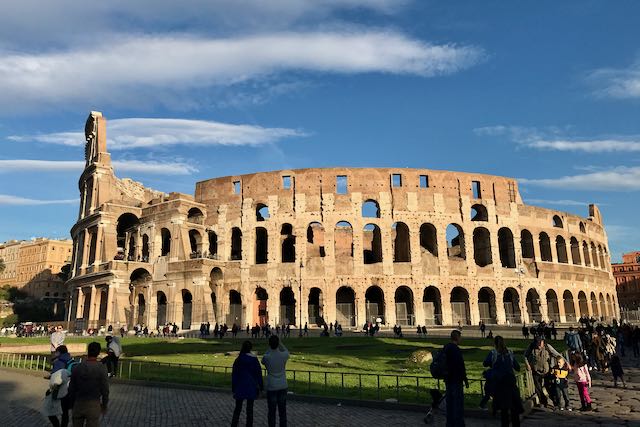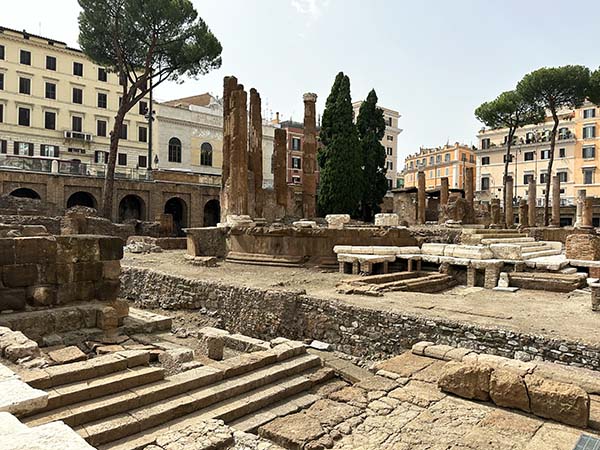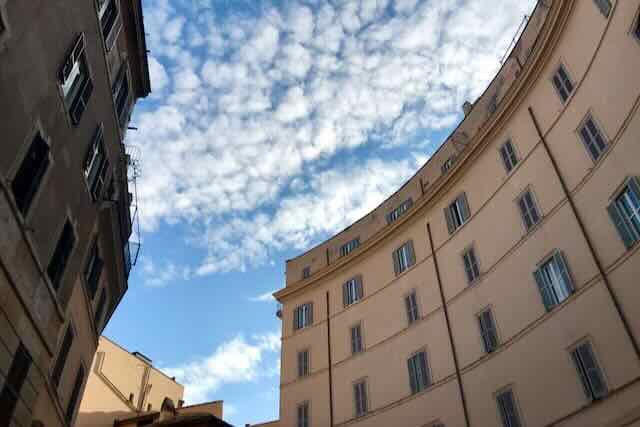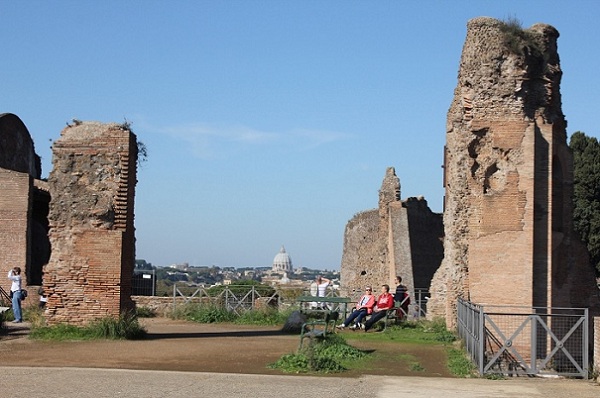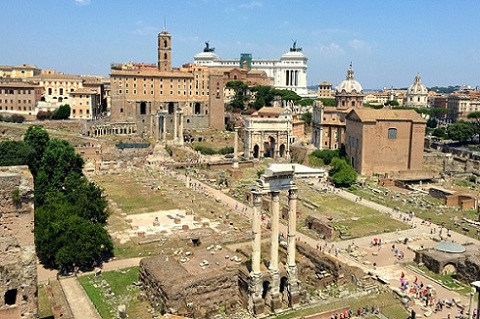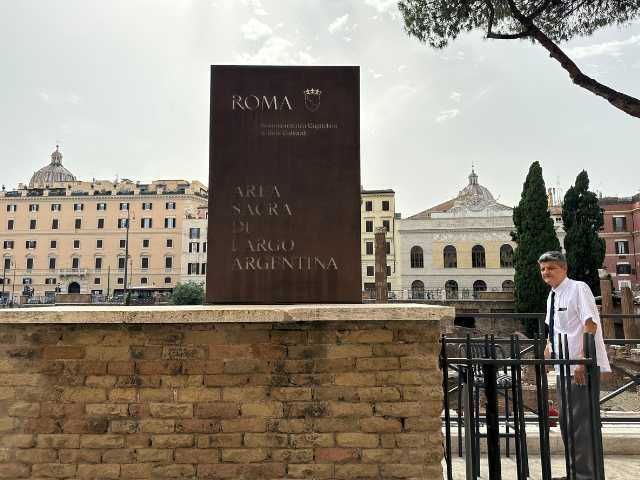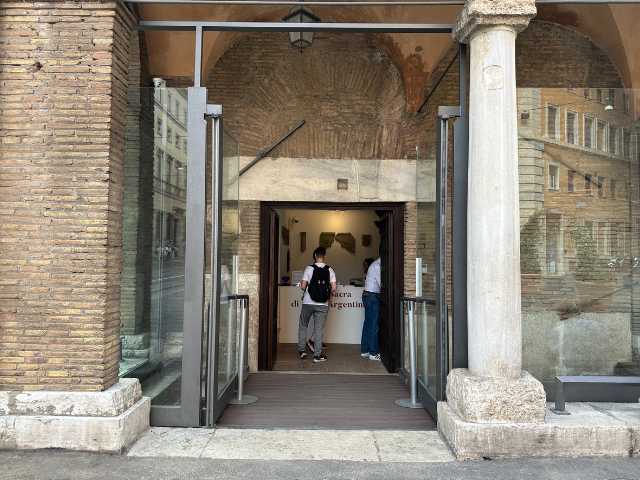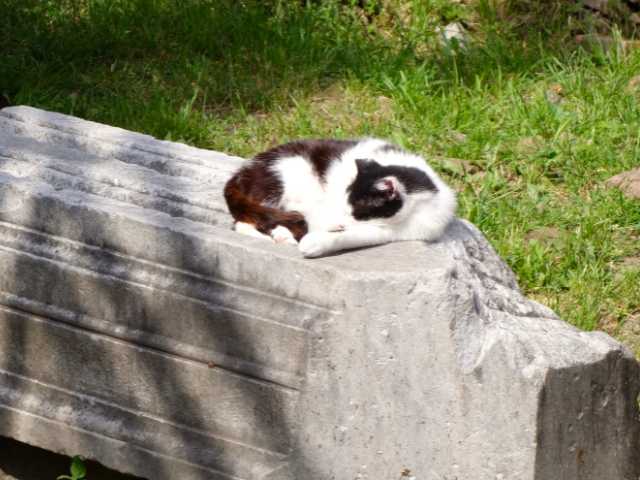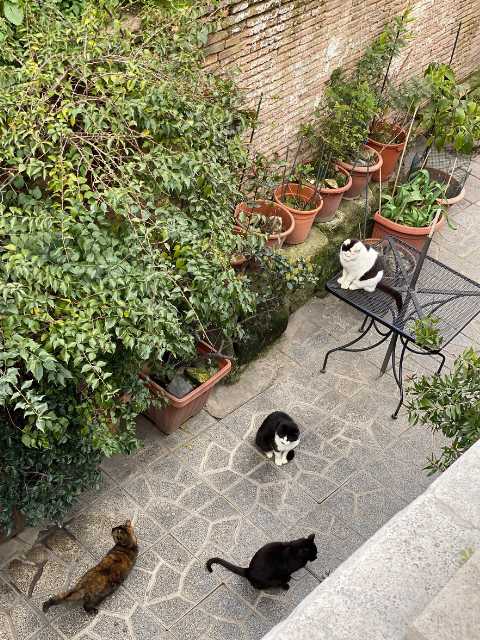- Sign up & get a FREE ebook Subscribe NOW!
- Romewise Home Page
- What to Do in Rome
- Largo Di Torre Argentina
Largo Di Torre Argentina Is Now Open! Find Out How To Visit This Amazing Site!
The centrally located Largo di Torre Argentina is easy to pass by, but the archaeological complex dating from ancient Rome is well worth a detour!
Largo di Torre Argentina - Everything you need to know
It sounds like a mouthful, but Largo di Torre Argentina is one of the most important ancient historical sites in the Eternal City.
It's commonly referred to as 'Largo Argentina' to make life a little easier, and Area Sacra di Largo Argentina in Italian.
It happens to be where Julius Caesar was assassinated, but for many visitors and Rome residents alike, it might be best known as the home of Rome's largest sanctuary and shelter for stray cats.
As of June 2023, the area has been opened for the first time to public access.
We can now walk among the stunning temple remains, thanks to a long restoration project by Rome-based luxury jewelery house Bulgari!
On this page, we'll go over:
- What is the sacred area of Largo di Torre Argentina?
- Where is Largo di Torre Argentina?
- The history of Largo Argentina
- The buildings and temples of Largo Argentina
- How to visit Largo Argentina
- The cat shelter of Largo Argentina
What is the sacred area of Largo di Torre Argentina?
Largo di Torre Argentina is an archaeological zone in Rome.
It's known for being the site of the sacred area of Torre Argentina, which is a complex of ruined Roman temples and structures.
The area gained prominence when several well-preserved ancient Roman temples were discovered and then subsequently excavated in the early 20th century.
Where is Largo Argentina?
Largo di Torre Argentina is located in the historic heart of Rome.
You'll find it in the Campus Martius area of the city, not far from the Pantheon and Piazza Navona.
You can easily reach Largo di Torre Argentina from pretty much anywhere in the city.
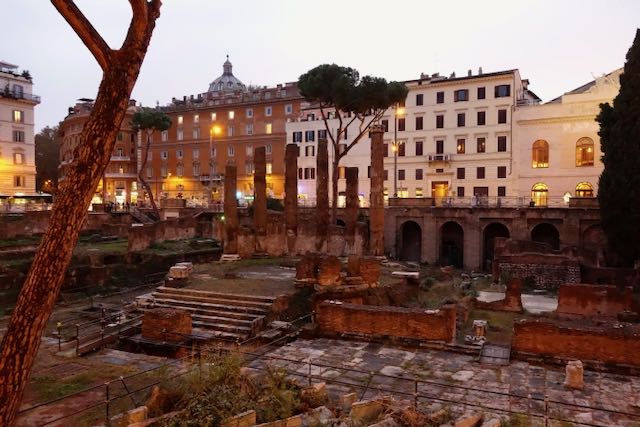 The ruins of the Largo Argentina site have always been an evocative place even before you could go down and see it up close!
The ruins of the Largo Argentina site have always been an evocative place even before you could go down and see it up close!It is around a 20 minute walk from the Colosseum, and a similar distance from Vatican City.
While there is not a metro stop close by, there are lots of bus routes that stop at the Largo Argentina hub.
There is also a large taxi rank there.
The perfect 3-day itinerary in Rome
Trying to figure out how to organize your visit to Rome? I've got the perfect 3-day itinerary for first-time visitors (or those who have not been here in a while.) It works for a 2.5 day visit as well.
In my 3-day itinerary, you'll see all the major must-see Rome attractions like the Vatican, Colosseum, Trevi Fountain, Pantheon, Piazza Navona, Spanish Steps, and much more.
And if you have more time, or want suggestions for extra/other things to do, you'll find that there too.
Visit my page with the best 3-day itinerary in Rome for first-timers.
History of Largo Argentina
The holy area of Largo di Torre Argentina is believed to date back to the 3rd to 2nd centuries BCE and was an important religious and political center in ancient Rome.
During the time of the Roman Republic, four temples, known as Temple A, B, C, and D, were constructed in the Campus Martius (Campo Marzio) area in around 509 -27 BCE.
One of the most significant events associated with Largo di Torre Argentina is the assassination of Julius Caesar on the Ides of March (March 15) in 44 BCE.
It is believed that the Curia of Pompey, a Senate meeting place located nearby, was the spot where Caesar was murdered.
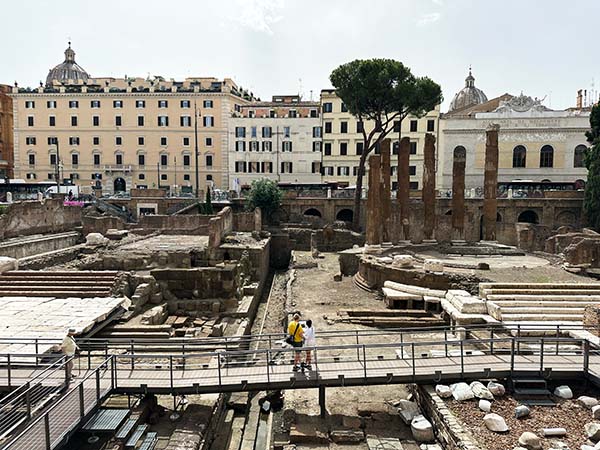 The view from the street is impressive (you can see Temple C and B here on the left and right respectively) but so much more awaits in the archeological site.
The view from the street is impressive (you can see Temple C and B here on the left and right respectively) but so much more awaits in the archeological site.Later during the Roman imperial period, emperors such as Augustus, Vespasian, and Domitian made renovations and additions to the existing structures.
With the fall of the Western Roman Empire in the 5th century, and over the course of the subsequent centuries, the buildings in the area fell into disrepair.
The site was eventually buried under layers of sediment and debris.
The ruins of Largo di Torre Argentina remained hidden and forgotten for centuries, with medieval and Renaissance buildings constructed on top.
The rediscovery of the site occurred in the early 20th century during construction work at the location.
The ruins of the Roman temples were unearthed, revealing their architectural beauty and historical significance.
In modern times Largo di Torre Argentina has become famous for the the cat sanctuary located there (more about this below!), and most recently, for the extensive renovations and restorations sponsored by Bulgari.
Where does the name come from?
The word Largo in Italian translates as 'square' and the term 'Torre Argentina' refers to the Torre Argentina Tower which once stood here.
The name Argentina is derived from the family name of the Papal Master of Ceremonies, Johannes Burckardt, who lived nearby in Casa del Burcardo on Via del Sudario, 44.
Burckardt was originally from Strasbourg, which was called Argentoratum when it was founded by the Romans, so his nickname became Argentinus.
There is a second theory that the name Argentina might have also originated from the word argentum, the Latin name for silver.
This association with silver can be attributed to the suggested presence of a silver workshop in the area during medieval times.
Despite the tower no longer existing, the name Largo di Torre Argentina has remained to refer to the square.
The buildings and temples of Largo Argentina
The most distinctive feature of Largo di Torre Argentina are the four temples dating from the Roman Republican era.
These are referred to as as Temple A, B, C, and D respectively.
The lettering is used because it is not known exactly which gods each temple was dedicated to, although historians and archaeologists have come up with some generally accepted theories!
These structures are characterized by their well-preserved architectural elements, such as columns and friezes.
They provide valuable insights into Roman temple design and construction because the Republic era predates a lot of the most famous Rome sites.
The Colosseum, Pantheon, Castel Sant'Angelo and Baths of Caracalla were all built well after the Largo Argentina complex.
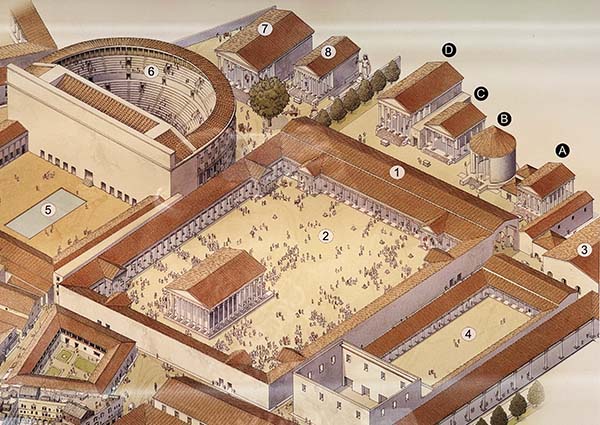 This illustration from the new visitor site shows how the buildings sat in relation to the wider area in ancient Roman times
This illustration from the new visitor site shows how the buildings sat in relation to the wider area in ancient Roman timesTemple A
Temple A is the best preserved temple and is generally believed to have been dedicated to Juturna, the goddess of fountains, wells and springs.
The temple follows a typical Roman architectural style with a frontal staircase leading to a portico supported by columns.
The interior of the temple housed a cella, which was the innermost chamber where the cult statue of the goddess would have been placed.
Temple A's high standard of preservation is in part due to the fact it was converted into a church.
A church was here as early as the 6th century, and you can still see parts of the flooring, altar and frescoes today.
👑 Explore Ancient Rome’s Fascinating Sites 👑
Experience a journey into the heart of ancient Rome. From legendary sites to lesser-known gems, explore the city’s timeless past and historical landmarks.
Temple B
Temple B, while smaller and less preserved than Temple A, remains historically significant.
It is believed to have been dedicated to the female deity Fortuna Huiusce Diei (Fortune on this Day).
Like the other temples in the complex, it was constructed during the Republican era, specifically in the 3rd to 2nd centuries BCE.
The exact architectural details of Temple B are not as well-preserved or documented as those of Temple A but it featured a frontal staircase leading to a portico supported by columns like Temple A.
During the excavations of Temple B, fragments of a colossal statue of Fortuna was discovered which can be seen at the Centrale Montemartini Museum.
No matter what season you visit Rome, here are 4 essential things we recommend never leaving home without:
Temple C
Temple C is the oldest temple of the four and was likely constructed in the 4th or 3rd centuries BCE.
It was possibly dedicated to Feronia, the goddess of fertility, but there is not sufficient archaeological evidence or remains for this to be certain.
It was in the area behind temples B and C where Julius Caesar was murdered, during a session of the Roman Senate in the first century BCE within the Curia of Pompey.
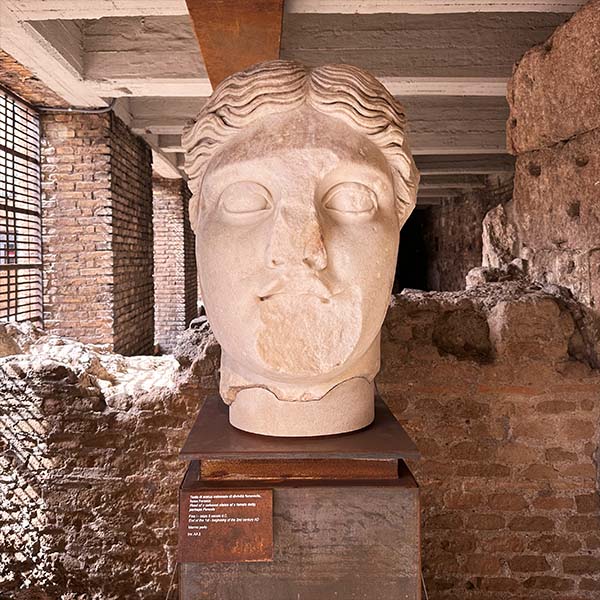 A colossal head of a statue of a female goddess, possibly Feronia, on display at the Largo Argentina Archaeological Area
A colossal head of a statue of a female goddess, possibly Feronia, on display at the Largo Argentina Archaeological AreaTemple D
Temple D is the largest of the four temples and was dedicated to Lares Permarini (Lares who protects sailors) in honor of a Roman naval battle victory in the second century BCE.
The facade originally featured six Corinthian columns across the front and eleven along the sides.
Unfortunately only a small part of it has been excavated, as the majority of the structure is under the modern street level.
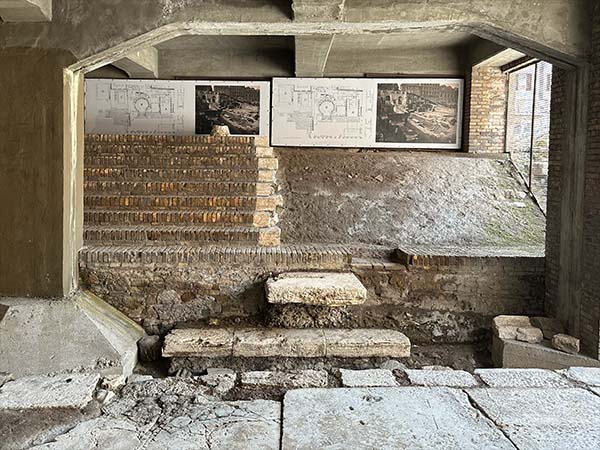 Much of Temple D is under the modern buildings surrounding the open square, but you can now see these ruins by visiting the new site!
Much of Temple D is under the modern buildings surrounding the open square, but you can now see these ruins by visiting the new site!What is the tower still visible at Torre Argentina?
This tower is known as the Torre del Papito, or Boccamazza tower, and it was constructed during the Middle ages.
Throughout the centuries it formed part of several different structures, all of which have now been lost following demolition work at different points.
The Curia of Pompey
This hall was originally part of a large complex commissioned by Pompey, one of the key figures in Roman politics at the same time as Julius Caesar.
Finished in 55 BCE, the complex was huge.
It linked the first permanent theater built in Rome with gardens and shady porticoes that led to the Curia building, as well as a temple dedicated to Venus Victrix.
Technically permanent theaters were banned from being built at this time, so Pompey used the temple as an excuse for the theater to get around the rules!
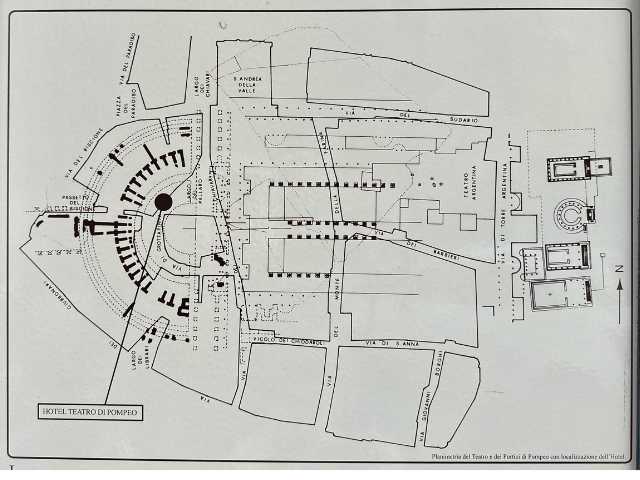 This map shows where Pompey's theater complex was in relation to the modern streets - Largo Argentina is the series of buildings on the edge of the map
This map shows where Pompey's theater complex was in relation to the modern streets - Largo Argentina is the series of buildings on the edge of the mapThe Curia was used as a back-up to the main Senate building in the Roman Forum, where the senators met on occasion.
Julius Caesar's successor, Augustus, had the Curia building walled up in memory of the assassination so it became unused and eventually assimilated into later structures in this area.
Nowadays not much remains, but you can see the foundations of the Curia building and the supposed spot where Caesar was struck down.
Pompey's theater also no longer exists, but many of the buildings between Largo Argentina and Campo di Fiori have fragments of arches, walls and foundation blocks in their basements.
As these buildings were constructed on the foundation of the theater, they follow the curved shape so you can get a sense of the scale of it!
Want to learn more about the ancient Roman emperors and how they lived?
This VIP experience gives you a deeper insight into their palaces, daily life and the political savvy needed to manage an empire.
How to visit Largo Argentina
Its possible to see all the temples for free, from any of the streets that ring Largo Argentina; just step up to the fences and look down!
From here you'll notice that the ancient ground level is way below the modern city of Rome.
While you can see some of the site from the city roads, I would recommend visiting inside the archaeological area to get a closer look at the temple remains in this fascinating attraction.
Since June 2023, following extensive conservation and restoration works sponsored by Bulgari, Largo Argentina has been made fully visitable.
Once inside, you will find a wealth of information creating an immersive experience that takes you back in time.
You can even visit some of the areas under the structures, which you cannot see from the street level!
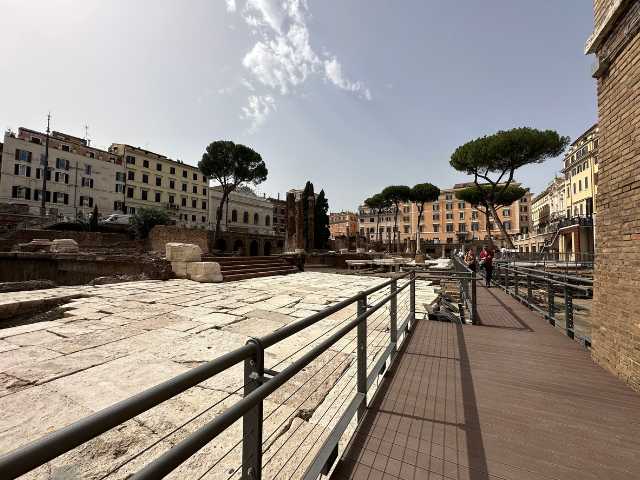 The new walkway has been designed to float above the ancient structure, giving visitors access without a risk of damaging the ruins
The new walkway has been designed to float above the ancient structure, giving visitors access without a risk of damaging the ruinsWhen inside, you'll follow an elevated walkway to get up close to the ancient ruins as well as a collection of artefacts found during the excavations.
The new site has been planned out so you can learn the whole history of this central part of the city, from its ancient origins to the rediscovery in the 1920's.
The new area is also accessibility friendly, with a platform lift and an even walkway suitable for wheelchairs and people with reduced mobility.
Opening hours and ticket information
You can buy tickets online here, and also in person from the entrance located at the southeastern corner of the square where Via di S. Nicola de' Cesarini and Via delle Botteghe Oscure meet.
The entrance ticket is just €5!
Largo di Torre Argentina is open Tuesday-Sunday:
End of March - End of October: 9:30am-7:00pm (last entry 6:00pm)
End of October - End of March: 9:30am-4:00pm (last entry 3:00pm)
Ready to plan your trip?
Book your train
Planning to travel between cities in Italy and other parts of Europe?
Use Trainline to see all the different options available across the different rail companies.
Find your hotel
Find your perfect place to stay in Rome.
Use Booking.com to choose between hotels, guesthouses, and self-catering apartments in neighborhoods throughout the Eternal City.
Buy your TurboPass
Purchase the convenient Turbopass and visit all of Rome's top attractions including the Colosseum, Pantheon, and Vatican.
With one handy pass, it's all included.
The Cat Shelter of Largo Argentina
Cat lovers are in for a treat when visiting here!
The Torre Argentina Cat Sanctuary is home to a large number of stray cats who live in the ancient remains.
This is the largest cat sanctuary in the city of Rome, with over 100 cats currently residing here.
It was unofficially founded in 1929 by cats themselves when they moved into the newly excavated site.
Over the ensuing decades generous Rome residents took it upon themselves to look after the cats.
The sanctuary became famous in the 1950's when Italian movie star Anna Magnani became a patron when working in a nearby theater.
Skip forward to 1995 and the sanctuary was officially founded by Lia Dequel and Silvia Viviani after many years of hard work by a lone volunteer.
Since then the shelter has gained recognition for its work in protecting the cats of Rome, not just in Italy, but across the world.
You can learn more and support their work by visiting the official website here.
Romewise's Top Travel Resources
Ready to book your trip to Rome? Take a look at these helpful links to companies we use and trust:
- Keep your travel spending simple with the Wise card, which removes all the worry about exchange rates and high transaction fees all over the world
- Search for and book your perfect accommodation
- Our complete guide to what to pack for Rome
- The number one travel accessory, a multi-point travel adapter and voltage converter
- Browse a huge range of tours in Rome and beyond
- Experience unique tours and special access to Rome's most popular sights
- Protect yourself with comprehensive travel insurance
Within this post there are some affiliate links for products and services. For more details about our affiliate policy click here.
Get your 100% free Rome trip planner now!
Simply sign-up today for our free newsletter and get the Romewise Quick Start guide to Rome:
We are committed to respecting your data. Click for our Privacy Policy.
Comments? Questions? Suggestions?
Please come over to the private Romewise Facebook group and join in the conversation.
You will often find me there, happy to answer your questions / comments!
You will also meet other Rome lovers and experts, too.
What are you waiting for?
- Romewise Home Page
- What to Do in Rome
- Largo Di Torre Argentina

